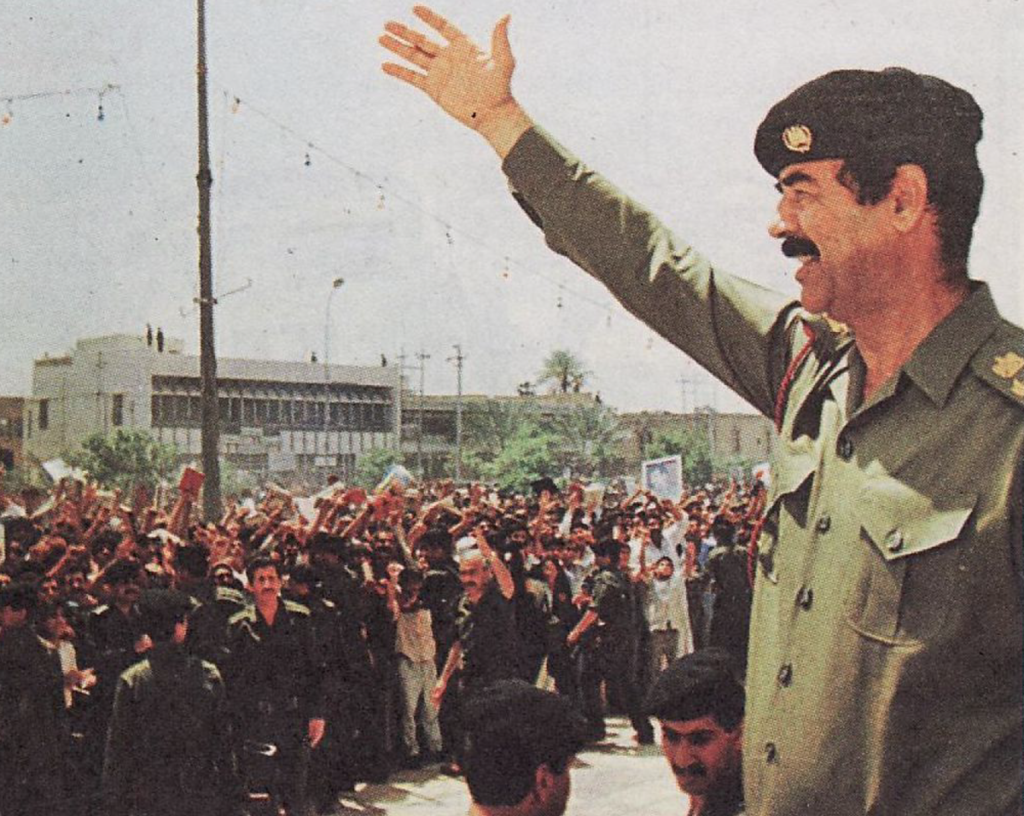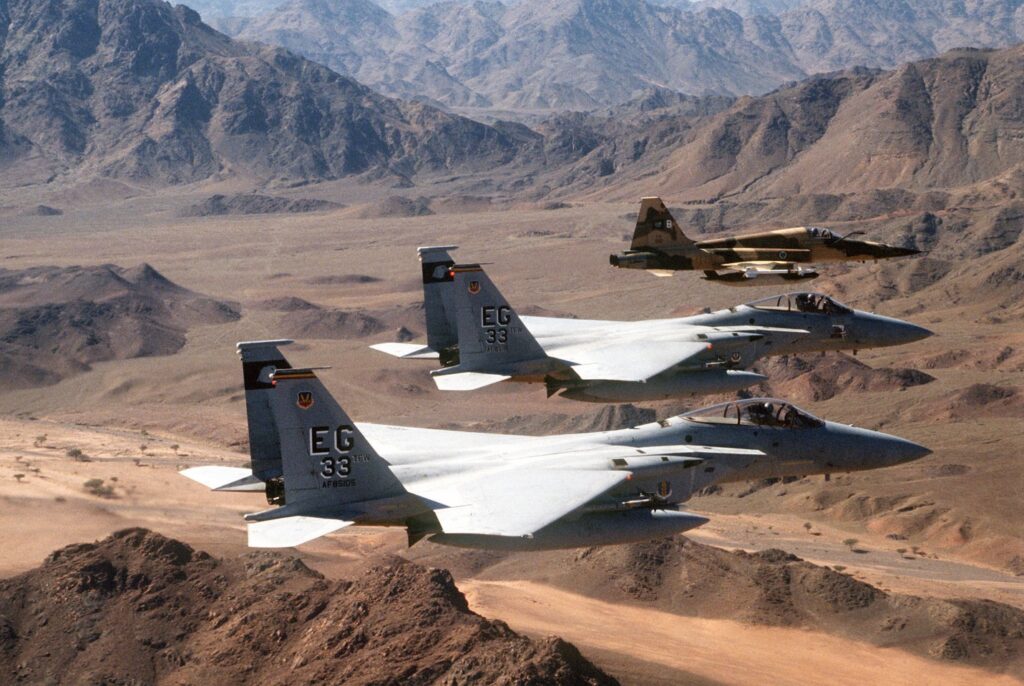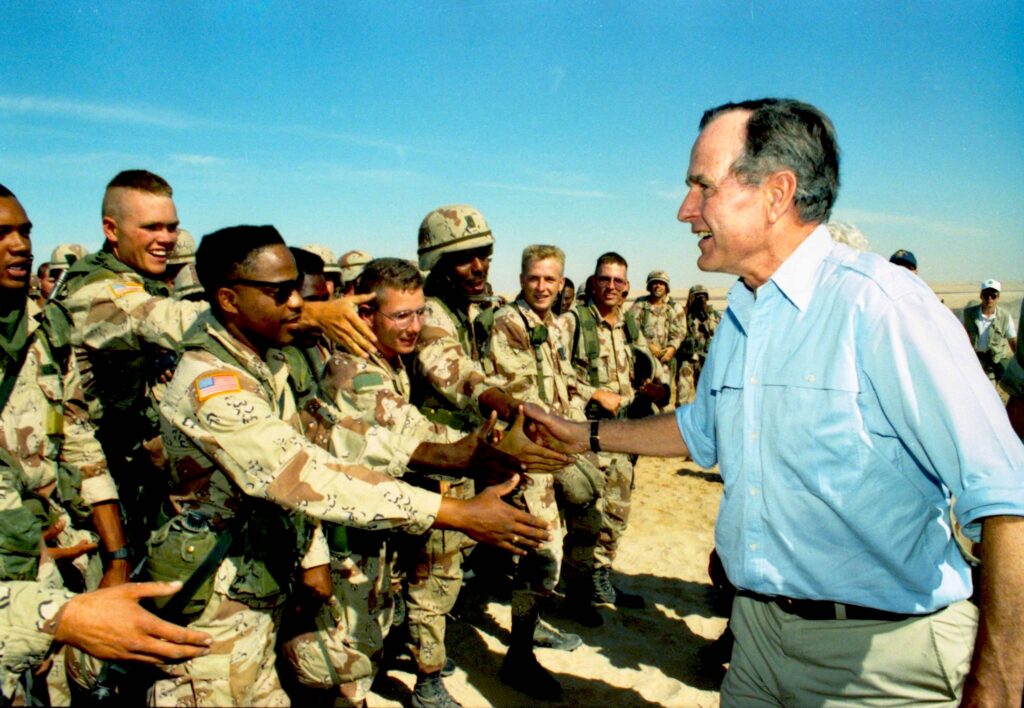The 1990-91 Gulf War was probably one of the best-planned and most well-executed military operations in the history of human warfare. The United Nations, with its resolutions condemning the Iraqi invasion and occupation of Kuwait, worked the way it was intended. UN Resolution 678 called for Iraq to leave Kuwait by January 15, 1991, and authorized member states to use all necessary means to enforce the resolution after the deadline. A coalition of 42 countries, led by the United States, did just that – and abided by the mandate after Iraqi forces withdrew.

Operation Desert Storm Begins After Iraq Invades Kuwait
The U.S. military dubbed the combat phase of the war Operation Desert Storm. The use of air power and overwhelming military force took little more than a month to dislodge Iraq from its ill-gotten gains. While Desert Storm is still rightfully celebrated as a resounding victory, the buildup to that victory, Operation Desert Shield, sometimes gets lost to historical memory.
Saddam Hussein’s Aggression Threatens Global Oil Supply
On August 2, 1990, Saddam Hussein’s Iraqi Army invaded neighboring Kuwait, in part to cancel his debt to the oil-rich nation for what he borrowed during the disastrous 1980–1988 Iran-Iraq War. He also believed the Kuwaitis were illegally keeping the price of oil low and slant drilling in the oil field, which spanned their shared border. The invasion was immediately met with international condemnation, and the United Nations passed a resolution that demanded Iraq’s immediate withdrawal.

But the problem went well beyond the borders of tiny Kuwait. At the time, the Middle East held 65% of the world’s oil supply, while Saddam Hussein fielded the third-largest army in the world, with more than a million troops under arms. Fears began to mount that Hussein wouldn’t stop at Kuwait if the world powers failed to act. At least three armored divisions of Iraq’s elite Republican Guard were now on the doorstep of Saudi Arabia, and the Saudi oil fields were ripe for the taking.
Operation Desert Storm Gathers Forces in Saudi Arabia
On August 6, 1990, Saudi King Fahd bin Abdul Aziz al-Saud formally asked for assistance in deterring further Iraqi aggression, inviting U.S. troops to defend his kingdom. President George H.W. Bush acted fast – a rapid buildup of military power and logistical support was on its way to the Persian Gulf region. Operation Desert Shield had begun.

The United States’ global reach was tested and passed with flying colors within days. Two F-15 Strike Eagle Squadrons, two carrier battle groups, an airborne warning and control system (AWACS), and the 82nd Airborne Division’s ready brigade were in and on the ground, prepared to meet any force that crossed into Saudi Arabia. But American forces, along with the rest of the Middle East, were still at risk.

Patriot missile batteries, communications networks, combat support units, aviation elements of the 101st Airborne Division and the 24th Infantry Division with its 216 M1A1 Abrams tanks were soon to follow. Then came 15 AH–64 Apache helicopters, 8 OH–58 Kiowa observation helicopters, 18 M551 Sheridan light tanks, 56 tube-launched optically tracked wire-guided (TOW) anti-tank missile systems, multiple-launch rocket system (MLRS) launchers, and 12 105-mm towed howitzers.
Operation Desert Storm Liberates Kuwait After Coalition Airstrikes
Months passed without any movement from the Iraqis in Kuwait, either into Saudi Arabia or to abide by the UN Resolution, which demanded its immediate withdrawal by January 15, 1991. Saddam Hussein had reinforced Kuwait with six divisions at that time. The U.S. evened the scales when the XVIII Airborne Corps arrived with an airborne division, an air assault division, two heavy divisions, an armored cavalry regiment, some 120,000 troops, 700 tanks, 1,400 armored fighting vehicles, and 600 artillery.
Meanwhile, the U.S. Navy blockaded Iraq to enforce UN sanctions while aircraft from bases in the area, Diego Garcia, and even the mainland United States stood ready to defend the region from further Iraqi aggression. America had drawn its line in the sand. The rapid deployment of American power gave the President of the United States the ability to commit U.S. troops not just to the defense of Saudi Arabia and the region but also to go on the offensive and push Hussein’s troops out of Kuwait.

In November 1990, President Bush sent the U.S. Army VII Corps to Saudi Arabia and Army Reserve and National Guard units from eight states. The number of troops swelled to more than 400,000, the most concentrated and complex projection of American military power since World War II.
When the UN’s deadline passed on January 15, 1991, American and Coalition forces began to prepare to dislodge the Iraqis from Kuwait, Operation Desert Storm. On the night of January 16, the Coalition launched a massive, 42-day aerial bombing campaign consisting of 100,000 sorties and dropping 88,500 tons of explosives on Iraqi targets. By the time the ground assault launched on February 24, the massive force built up during Desert Shield bore fruit: Iraq was defeated, Kuwait was liberated, and Saddam Hussein was cowed forever inside the internationally recognized borders of Iraq.
Read About Other Battlefield Chronicles
If you enjoyed learning about Operation Desert Storm, we invite you to read about other battlefield chronicles on our blog. You will also find military book reviews, veterans’ service reflections, famous military units and more on the TogetherWeServed.com blog. If you are a veteran, find your military buddies, view historic boot camp photos, build a printable military service plaque, and more on TogetherWeServed.com today.

This article does not include the significant contributions the United States Marine Corps expeditionary forces I MEF and II MEF made in this conflict. We were there and liberated Kuwait City.